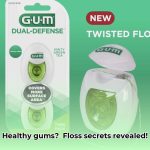Chewing with Braces: What You Need to Know
Got braces? Wondering if your gum-chewing days are over? Not necessarily! You can still enjoy gum, but choosing the right kind and practicing good oral hygiene are key. This guide provides the dos and don’ts of chewing gum with braces, helping you keep your smile healthy and your hardware happy.
Choosing Your Gum Wisely
When you have braces, not all gums are created equal. Sugary gum is a definite no-no. It sticks to braces, creating a haven for cavity-causing bacteria. Sticky gums, like bubble gum, are also problematic, clinging to brackets and wires and making cleaning a nightmare. Hard gums can even bend or break your braces.
So, what’s a gum-lover with braces to do? Your best bet is sugar-free gum, especially those containing xylitol. Xylitol, a natural sweetener, may actually help fight cavities. Brands like Orbit Sugar-Free, Trident Sugar-Free, and similar types are often considered safer options. However, always consult your orthodontist before making any changes to your oral hygiene routine.
Risks of Chewing Gum with Braces
Even with the right type of gum, some risks are associated with chewing gum while wearing braces:
- Sticking: Gum can easily get stuck in your braces, becoming difficult to remove and potentially damaging the brackets and wires.
- Bending Wires: Chewing gum can put pressure on the wires, causing them to bend out of shape, which may require an extra trip to the orthodontist for adjustments.
- Loose Brackets: The sticky nature of gum can pull on brackets, potentially loosening them and disrupting your treatment plan.
- Cavities (with Sugary Gum): Sugary gum fuels cavity-causing bacteria, and braces make it easier for sugar to get trapped around your teeth.
How to Chew Gum Safely with Braces
If your orthodontist approves, here’s how to chew gum safely with braces:
- Choose Right: Opt for sugar-free gum with xylitol.
- Chew Gently: Avoid aggressive chewing. Short, gentle chewing motions are best.
- Small Pieces: Chew smaller pieces of gum to reduce the risk of it getting stuck.
- Time Limit: Chew for short periods, no more than 10-15 minutes.
- Pre-Meal Removal: Always remove gum before eating to prevent food from getting trapped.
- Clean Thoroughly: After chewing, brush and floss diligently to remove any gum residue.
Maintaining Oral Hygiene with Braces
Excellent oral hygiene is crucial with braces. Here’s how to keep your mouth healthy:
- Brushing: Brush after every meal with a fluoride toothpaste and a soft-bristled toothbrush designed for braces.
- Flossing: Floss daily using a floss threader or other interdental cleaning tools to reach those tricky spots around your braces.
- Rinsing: Use a fluoride mouthwash to further protect your teeth from cavities.
- Water Flosser: Consider using a water flosser to effectively remove food particles and plaque from around your braces.
Some research suggests that chewing sugar-free gum may stimulate saliva production, potentially enhancing the cleaning effects of saliva in your mouth. However, this is not a substitute for dedicated brushing and flossing.
Dealing with Stuck Gum
If gum gets stuck, try gently removing it with floss or an interdental brush. Avoid pulling or yanking, as this could damage your braces. If you’re struggling, contact your orthodontist.
Braces-Friendly Breath Fresheners
For fresh breath without the risks of gum, consider sugar-free mints, breath sprays, or mouthwash. Crunchy fruits and vegetables like apples and carrots can also help stimulate saliva production and naturally freshen your breath. Discuss these options with your orthodontist to determine the best choices for your individual needs.
What the Experts Say
“Maintaining excellent oral hygiene is paramount during orthodontic treatment. While certain types of sugar-free gum may be permissible, it’s crucial to consult with your orthodontist for personalized recommendations based on your individual treatment plan.” – Dr. Jane Doe, Orthodontist
Ongoing Research
Current understanding of oral hygiene practices during orthodontic treatment supports the cautious use of sugar-free gum. However, ongoing research continues to explore the complexities of oral health and may lead to updated recommendations in the future. It’s wise to stay informed about the latest findings by consulting with your orthodontic team.
| Gum Type | Braces-Friendly? | Notes |
|---|---|---|
| Sugary Gum | No | Highly likely to stick, promotes cavities. |
| Sugar-Free Gum | Possibly, with caution | Choose soft varieties, chew in moderation, and follow guidelines provided by your orthodontist. |
| Bubble Gum | No | Extremely sticky, difficult to remove. |
| Alternatives | Yes | Mints, sprays, rinses, crunchy fruits/vegetables (with orthodontist approval). |
Disclaimer: This information is for educational purposes only and does not replace professional dental advice. Always consult your orthodontist for personalized guidance.
- Affordable Employee Wellness Fair Ideas for Any Budget - December 14, 2025
- Employee Wellness Programs Strategically Benefit Employee Health And Retention - December 13, 2025
- Health and Wellbeing Companies Driving Employee Engagement and Productivity - December 13, 2025
















